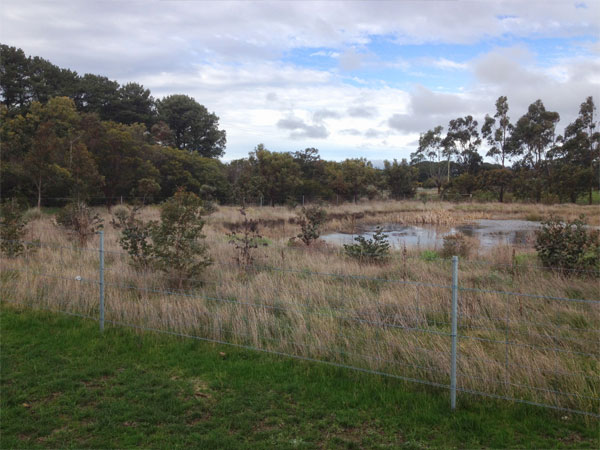Building resilience in grazing agriculture near Mount Wallace swamp
One of the most challenging aspects of maintaining a farm is ensuring its resilience to uncontrollable external factors. In grazing agriculture, these may include things such as seasonal climatic changes in rainfall and temperature, and fluctuations in market prices.
But farming landscapes must be able to respond in a way that enables the farming entity to be sustained, says Anthony Dufty, coordinator for the Port Phillip and Westernport Catchment Management Authority (PPWCMA). “Greater resilience may be a function of the maturity and complexity of the social-ecological system and the biological diversity they contain,” he says.
One such agro-ecological system where diversity and complexity has been fostered is a property at Mount Wallace, central Victoria. The farm comprises of 1,060 hectares and was set stocked for grazing sheep since the early 1900s. This resulted in a greatly degraded ecosystem that was converted to conservation agriculture over 30 years ago when it was purchased by John and Maureen Fish.

Frog ponds created to enhance wildlife on Maureen and John Fish’s property.
At this time, about 230 hectares was reserved for conservation of Golden-headed Cisticola, Little Grass Bird, Banded Stilts, Short-tailed Sand Pipers and a range of reptiles, amphibians and mammals. The property was quickly transformed by revegetation and reducing fencing paddock sizes.
Since the 1960s, Australian agriculture has maximised stocking rates on greatly simplified pastures, with increasing inputs of fertilisers and chemical pesticides/herbicides to improve production yields. Agro-ecological systems that focus on production yields contain limited structural and functional complexity, but can offer high potential for recovery. Slight improvements in diversity can result in substantially greater productivity.
The Mount Wallace farm was originally comprised of six paddocks of 150 – 200 hectares each. The Fish’s then further subdivided it to create paddock sizes of seven to nine hectares. This has allowed greater control of stocking rates, and enhanced perennial pastures through grazing management to ensure grass tiller conservation. This has resulted in increased pasture coverage and a minimum biomass of 1,500 kilograms per hectare in all paddocks.
Conservation zones were also established to protect and enhance biodiversity. A total of 22,000 trees, shrubs and grasses were planted in 2005 alone, creating a four kilometre Billabong system, with 10 shallow feeding dams that encourage birdlife and shelter for stock. The property now produces prime beef where stocking rates have increased from nine DSE to 16 DSE per hectare, and the average carcass weight has increased 1.3-fold.
The conservation works did not in any way adversely affect the farm business; the cost of production has been estimated at $1.01 per kilogram, which for central Victoria is mid-range. This emphasises the ability of farmers to manage conservation without impacting on the productivity of grazing agro-ecological system. The farm near Mt Wallace swamp is approaching the maturity and complexity that is needed to maintain the soil fertility, pasture biomass, ground cover, and biodiversity to sustain productivity of the Social Ecological System into the future.
Anyone wishing to contribute to the understanding of how farmers use biodiversity on farms, or to learn more about the PPWCMA’s program in sustainable agriculture, can contact Anthony Dufty on 0439 003 765.



